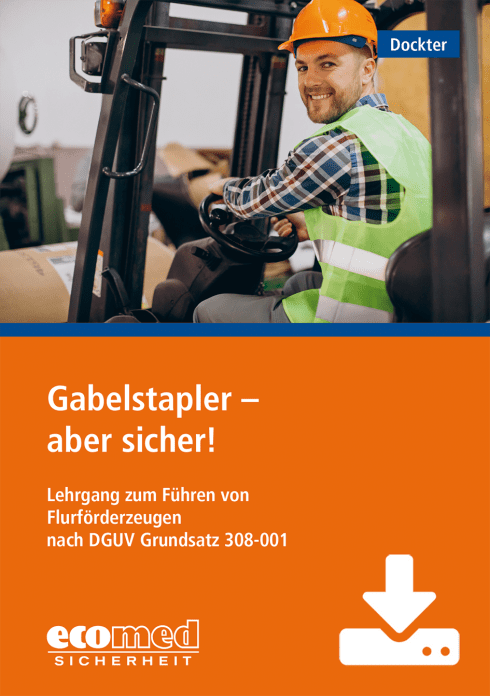
Training course for driving industrial trucks according to DGUV 308-001 (with CD-ROM and document paper)2nd edition 2020, 48 pages Concise and clearly focussed on the essentials, with targeted control questions - ideal for training, preparing for the test and annual instruction:- Legal basics: Who is allowed to work where, what requirements must be met? What is the risk of accidents? What are the main causes and how can they be eliminated? - What is what, and how does it (move)? Pallet trucks, ants, factory plates, fork extensions, work platforms, LPG drives, etc. are explained in a nutshell. - Stability: Centre of gravity, load capacity diagram, attachments, driving on bends, principles of conduct - What to look out for during operation: Principles that ensure safety - Everything in order? The 4x4 rule for daily functional and visual inspections and regular UVV inspections - How do you handle the load safely? Be safer with these short tips! The expert package Forklift trucks - but safely! contains: - 11 videos on the following topics on CD-ROM: - Daily departure checks - Correct stacking of pallet cages and pallets - Practical driving exercises - Two test sheets with 30 and 50 questions in two different versions - making it impossible to copy from your neighbour. The so-called recording protocol can be printed out to match (see below: ‘Tips’). The control templates with the correct solutions help you to analyse the exams. - A certificate of attendance in A4 format to fill out on the PC - A participant booklet - a participant booklet- Special, particularly high-quality document paper for printing out the ‘forklift licences’ (sufficient for 50). On the CD-ROM you will find an editable PDF file as a print template; the photo of the ‘forklift licence’ holder can be digitally inserted directly! The document paper can be reordered in packaging units of 25 sheets (enough for 50 licences). Tips on the recording protocol The forklift truck - but safe! expert pack contains four different printable test sheets - two with 30 questions each, two with 50 questions each. Our tip for recording the test results: - Hand out the exam sheets (alternate versions to prevent copying!) in a transparent envelope and give each participant the recording protocol. This contains space for the candidate's personal details and forms for ticking the correct answers for each version of the examination sheet. - The participant enters their data in the recording log and also ticks the correct answers to their examination questions. - After returning the recording log, the instructor also enters the results of the practical examination and thus has a complete document to document the course.
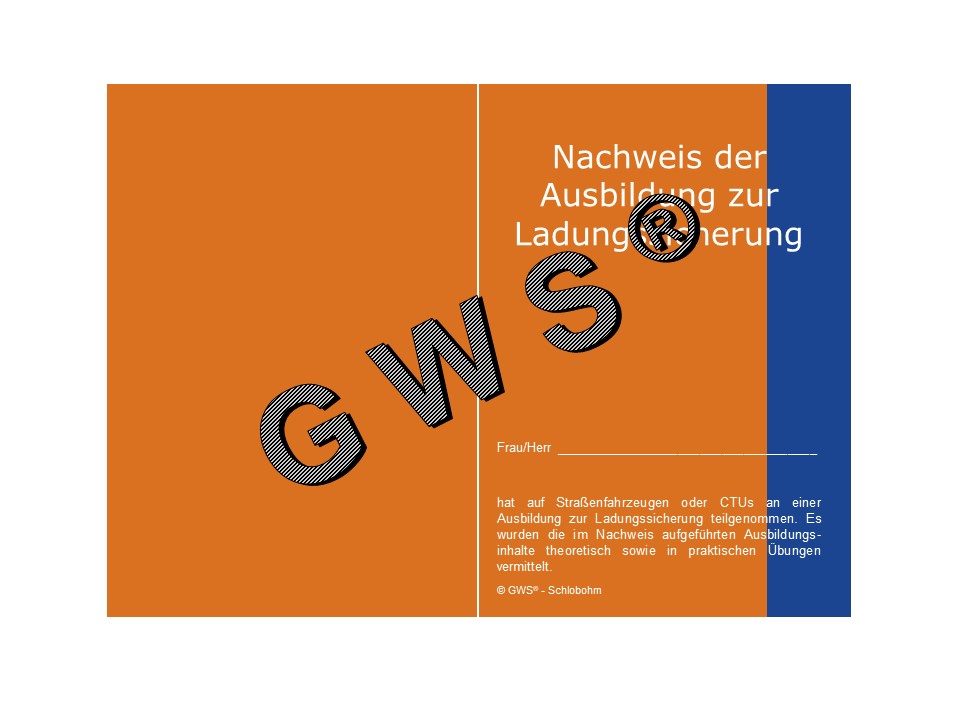
"Proof of training in load securing"To document participation in training courses in the field of load securing on road vehicles and/or according to the CTU code.With side for photograph and signatureGeneral and special training contentFor initial training and advanced trainingThe general and special training content according to VDI 2700a and the CTU code specified in the ID card have been observed. In order to meet the state of the art and the legal basis, a 3-yearly recurring training course according to VDI 2700, sheet 5 "Load securing on road vehicles - quality management systems" must be carried out.Evidence of the 3-yearly recurring training can be recorded in the training record.Training organizers are thus constantly in contact with their customers.Quantity prices on requestCurrently only available in German! Feel free to contact us if you need another language.

Document paper for issuing driver's licences for your training participantsFor the training courses ‘Forklift trucks - but safely!’, ‘Telescopic forklift trucks - but safely!’ and ‘Load securing - but correctly!’ To enable you to hand out suitable driver cards to your training participants, you will find a PDF file on the instructor CDs, which can be filled out on the PC and printed out or printed out blank and filled out by hand. The highlight: the photo of the new ID card holder can be digitally integrated! The document paper is a white, particularly hard-wearing special paper in DIN A 4 format in a packaging unit of 25 sheets for printing driver ID cards. 2 driver ID cards per sheet
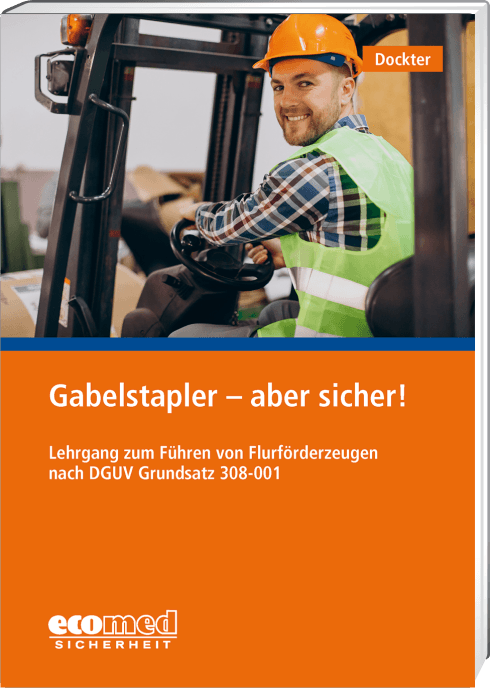
Training course for driving industrial trucks according to DGUV 308-001 2nd edition 2020, 48 pagesConcise and clearly focussed on the essentials, with targeted control questions - ideal for training, preparing for the test and annual instruction: - Legal basics: Who is allowed to work where, what requirements must be met? - What is the risk of accidents? What are the main causes and how can they be eliminated? - What is what, and how does it (move)? Pallet trucks, ants, factory plates, fork extensions, work platforms, LPG drives, etc. are explained in a nutshell. - Stability: Centre of gravity, load capacity diagram, attachments, driving on bends, principles of conduct - What to look out for during operation: Principles that ensure safety - Everything in order? The 4x4 rule for daily functional and visual inspections and regular UVV inspections - How do you handle the load safely? Be safer with these short tips! - Special applications: Use of a work platform, use on public roads, diesel equipment in halls, towing trailers - Travelling in public spaces: traffic rules for industrial trucks
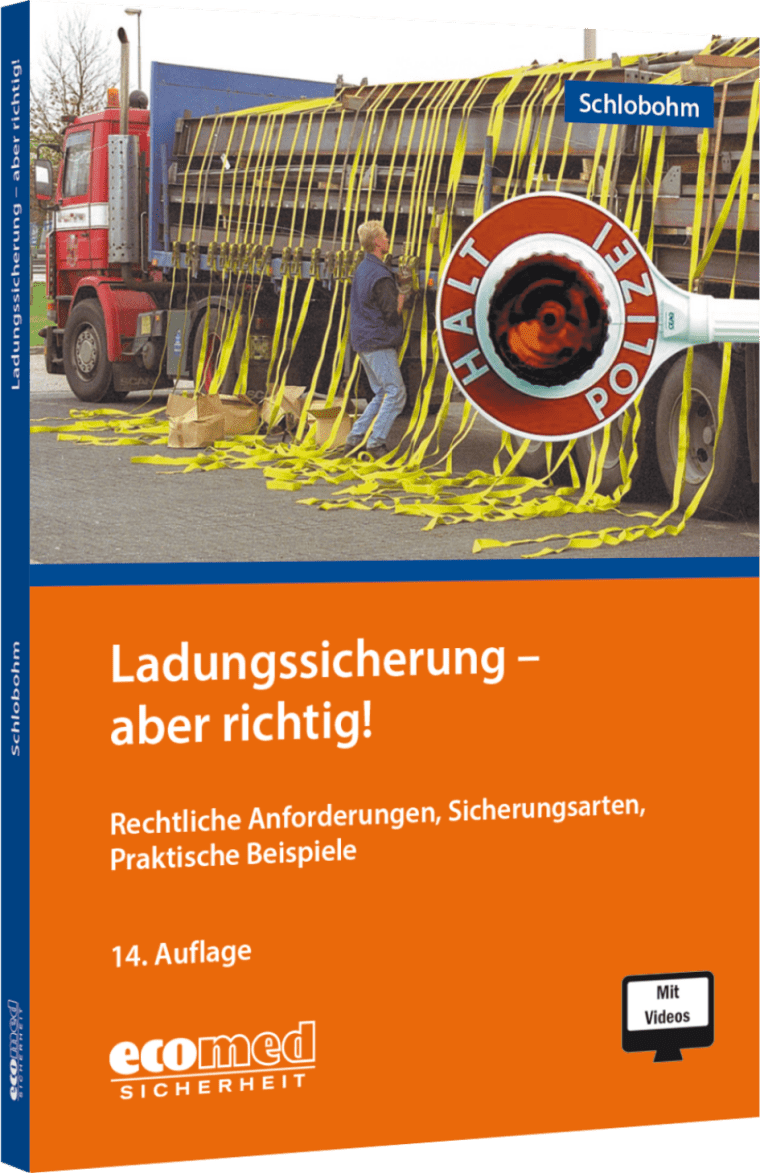
Wolfgang Schlobohm, 14th edition 2021, paperback 247 pages, DIN A5 formatThe big load securing textbook: very clear, with lots of pictures and now brand new: with 17 how-to (not!) videos. What everyone who transports something by vehicle should know - an explanation of the basic concepts of load securing with practical examples, based on VDI 2700a. This book provides you with all the required ‘LaSi’ training content - in accordance with both VDI 2700a and the Professional Driver Qualification Ordinance. In this edition, all tables have been revised and adapted to the current guidelines. The structure of the textbook ‘Load securing - but the right way’ is based on VDI 2700a. Accordingly, it covers all the required training and further training content: - Legal basics: responsibilities, liability, fines - extracts from regulations (e.g. from the StGB, OWiG, ADR) clarify the various responsibilities - Physical basics: Forces, especially centrifugal forces and friction and stability - What the vehicle must have: Superstructures, load capacity, lashing points - Types of load securing: force-fit (tie-down lashing), form-fit (diagonal lashing method), diagonal lashing, horizontal lashing, bay lashing, head lashing - thanks to the clear explanation, all of these terms form handy ‘how-to’ instructions in your head-Lashing equipment and other load securing aids: Many photos show you how to use the various aids correctly, from anti-slip mats to lashing straps and lashing chains - with practical brief explanations! - Determining the required securing forces: The calculation methods, formulas and tables used are based on DIN EN 12 195-1:2021 ‘Calculations of securing forces’ -Additional load securing aids: Many concise photos show how best to use edge protectors, round slings, head straps, nets, tarpaulins, rails, stanchions, strapping, dunnage bags, etc. - So better (not!) - examples show your trainees in words and pictures how they can secure which loads and also what they should better leave out. This edition contains many exemplary colour illustrations, control questions for each chapter and a checklist at the end of the book, which is a valuable aid before, during and after loading, so that nothing is left to chance. The book is accompanied by a presentation for training providers and instructors as well as document paper for issuing training certificates - all together as an expert package . Quantity prices on request
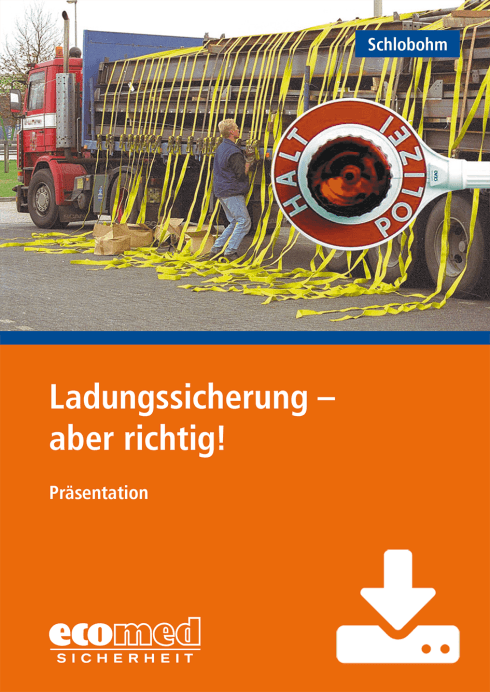
Wolfgang Schlobohm, 13th edition 2021Load securing: how to train professionally according to VDI 2700a!Professional drivers are legally obliged to qualify in load securing and must regularly refresh their knowledge of load securing. The training content for the required proof of expertise is regulated in VDI guideline 2700a. Further training takes place by attending a course at a recognised training centre. Our training documents contain all the required training content. The following main topics are covered in the participant booklet: - Legal and physical principles - Requirements for the transport vehicle - Types of load securing - Determining the required securing forces - Lashing equipment and other load securing aids - Examples and practical exercises The book contains many exemplary colour illustrations, control questions for each chapter and a checklist at the end of the book, which is a valuable aid before, during and after loading, so that nothing is left to chance. Excerpts from regulations (e.g. StGB, OWiG, ADR) make the responsibilities of the persons concerned clear. Calculations for load securing are shown in accordance with the applicable DIN EN 12 195-1.The download contains PowerPoint presentations with over 600 slides (including 35 video clips) on the following topics: - Legal basics - Physical basics - Requirements for the transport vehicle - Types of load securing - Lashing equipment for load securing - Determining the required securing force - Other load securing aids - Numerous practical examples - Control questionsThe slides are editable so that you can add your own logo, for example! With the expert package, consisting of participant booklet, download and document paper, you can easily convey the training content required by VDI 2700a! What's new is that you can now print out the certificates for your participants yourself on the enclosed special paper (enough for 50 certificates) after the training. In the download you will find an editable PDF file as a print template. The photo of the new training certificate holder can be digitally inserted directly. The document paper can be reordered in packaging units of 25 sheets (sufficient for 50 ID cards).

Speaker documents and presentation (download)Wolfgang Schlobohm, 13th edition 2021Our training materials contain all the required training content. The download for trainers contains PowerPoint presentations with over 600 slides (including 35 video clips) on the following topics - Legal basics - Physical basics - Requirements for the transport vehicle - Types of load securing - Lashing equipment for load securing - Determining the required securing force according to DIN EN 12195-1 - Other load securing aids - Numerous practical examples - Control questions New in the new 2021 edition: - Even more video clips and images that clearly and tangibly illustrate how good load securing works in practice - Lashing point signs and calculations are harmonised with the current DIN EN 12640 standard - New calculation example for load distributionThe slides are editable so that you can add your own logo, for example! In addition to the presentations, you will also receive- Explanations of the integrated video clips - Checklist for load securing - Training plan - Tool for creating training certificates: - You will find an editable PDF file as a print template. The photo of the new training certificate holder can be digitally inserted directly! - You will find special, particularly high-quality document paper for printing the training certificates (sufficient for 50 certificates) https://shop.gws-schlobohm.de/Dokumentenpapier-zur-Ausweiserstellung/400403
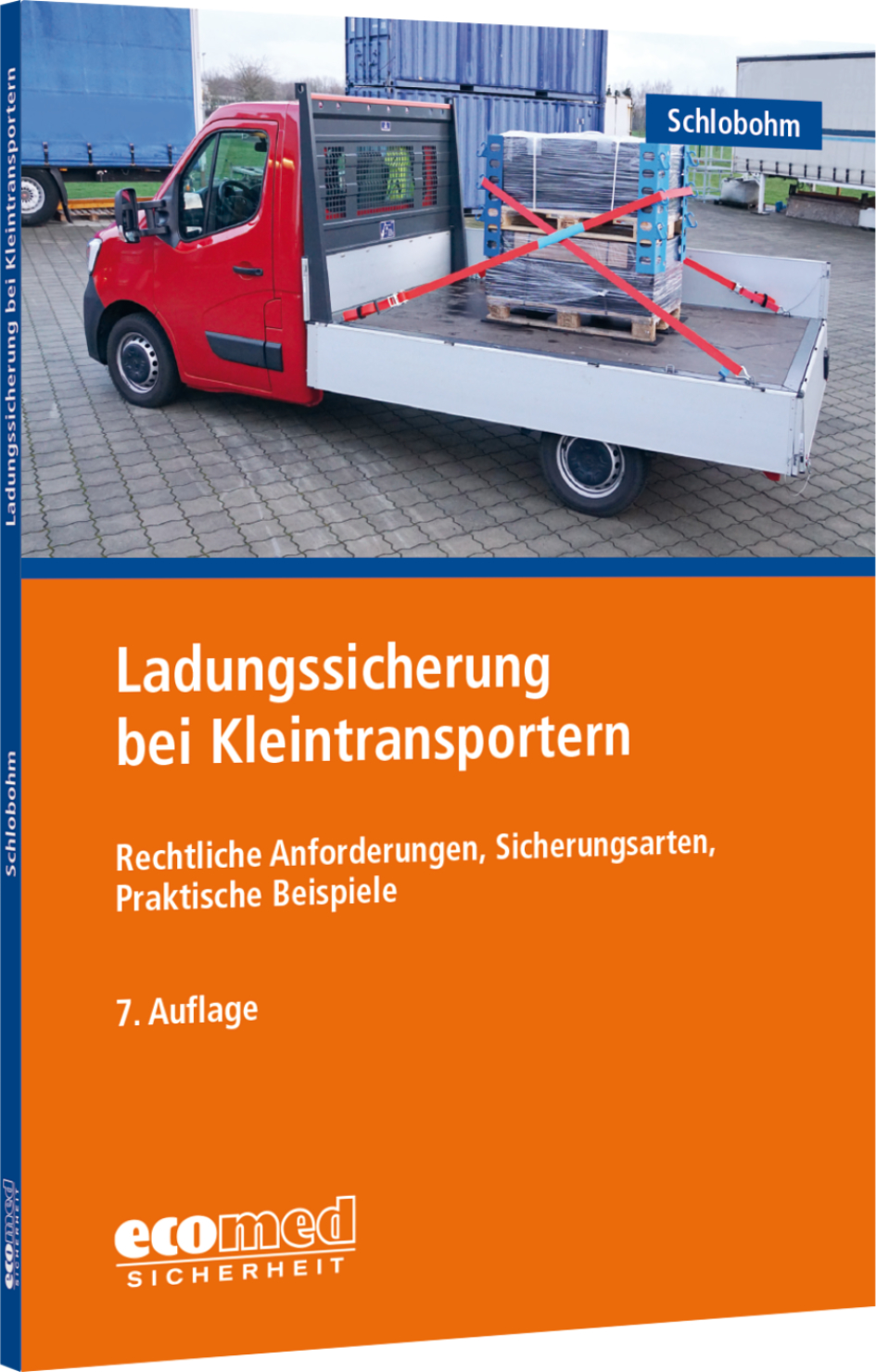
What do you need to bear in mind when transporting cargo in a van? Vans are often used as fast transporters or in the construction industry, and the drivers often only have a driving licence for cars, often drive at inappropriate speeds and have hardly ever heard of load securing. Instruction in the basics of load securing is therefore left to the owner of the vehicle. But be careful: all persons who are directly or indirectly involved in loading are also responsible for load securing!This book uses practical examples to give you an insight into the basic concepts of load securing. The tables and calculations in the book are based on VDI 2700 Sheet 2, as DIN EN 12195-1 does not apply to vehicles up to 3.5 tonnes. You will find in this book - Legal principles - Physical principles - Requirements for the transport vehicle - Types of load securing - Determining the required securing forces - Lashing equipment for load securing - Other load securing aids - Load securing options on flatbed and box vehicles - Load securing checklist - Control questions Quantity prices on request
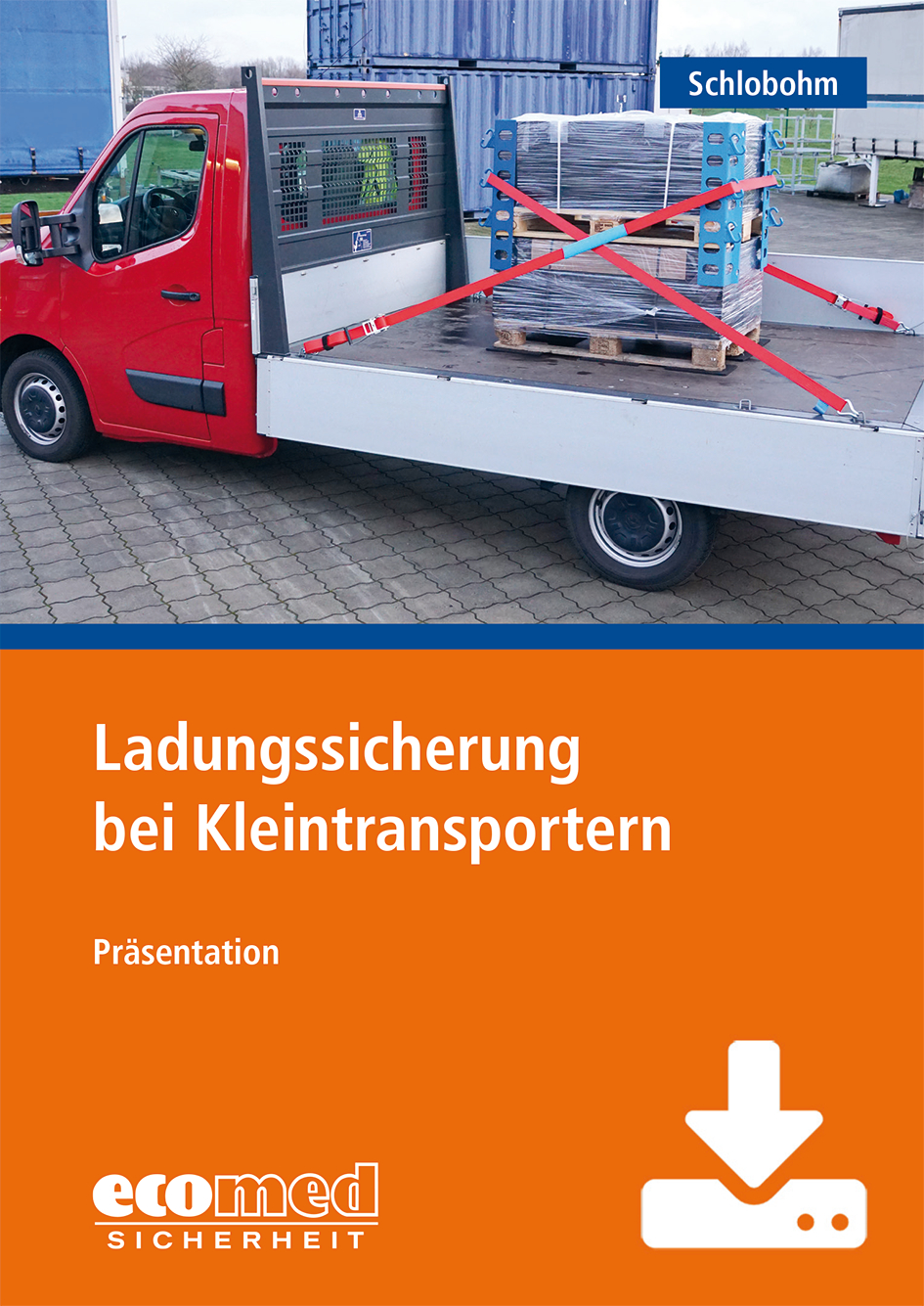
Speaker documents and presentation (download) Wolfgang Schlobohm, 7th edition 2023What needs to be considered when transporting cargo with a van?Vans are often used as fast transporters or in the construction industry. The drivers often only have a driving licence for cars, often drive at inappropriate speeds and have hardly heard of load securing. Instruction in the basics of load securing is therefore left to the owner of the vehicle. But be careful: all persons who are directly or indirectly involved in loading are also responsible for load securing.The download contains PowerPoint presentations on the following topics: - Legal basics - Physical basics - Requirements for the transport vehicle - Types of load securing - Determining the required securing forces - Lashing equipment for load securing - Other load securing aids and - Numerous realistic examples from practice on a total of approx. 345 slides (including 11 video clips) - Control questionsAlso included are a training plan, a load securing checklist and the revised load securing calculation programme ‘LA-BE’ on an Excel basis. The slides are editable so that you can add your own logo, for example! This presentation makes it easy to convey the training content required by VDI 2700a. This is how the download works: After ordering, you will receive an order confirmation by e-mail containing the download link. The product is delivered as a zip file. A programme for unzipping must be installed on your device.
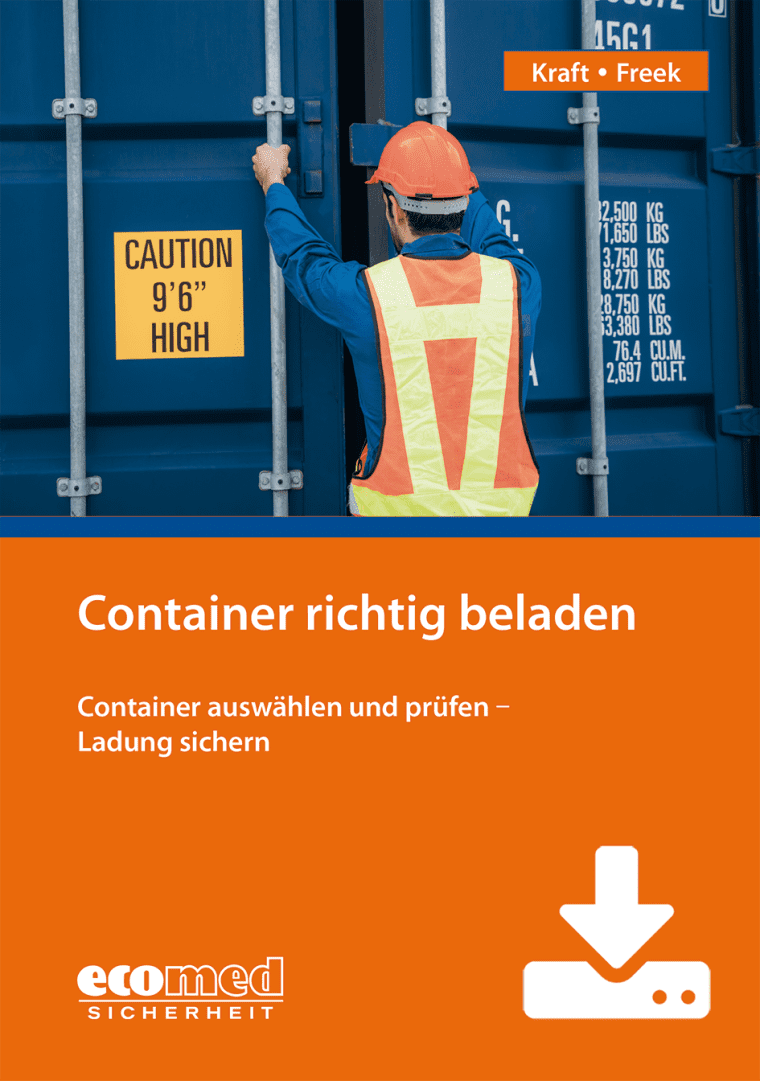
(Download)Joachim Freek, Uwe Kraft, Gerhard Süselbeck, 8th edition 2022 Load securing in containers: How to optimally train everyone involved! Especially for general cargo of all kinds, the freight container is the means of choice for fast, safe and efficient handling. Everyone involved in packing, unloading and securing the load in the container must be specially trained. The book for the participants (Book for the participants) and this download for the instructor make training very easy! The book and download have been completely revised by the authors. For example, the contents of the Code of Practice for Packing CTUs (CTU Code), methods for determining the confirmed gross mass, formation of loading units with stretch film, large cargo items on flatracks have been taken into account. From the contents : - Fundamentals of the container - Regulations - Physical principles of load securing - Load securing equipment and its use - Loading the container - Documentation - Fumigation of the container - Security - Control questions The presentation download for the lecturer is tailored to the content of the book. The download also offers short video clips to better illustrate some of the facts.
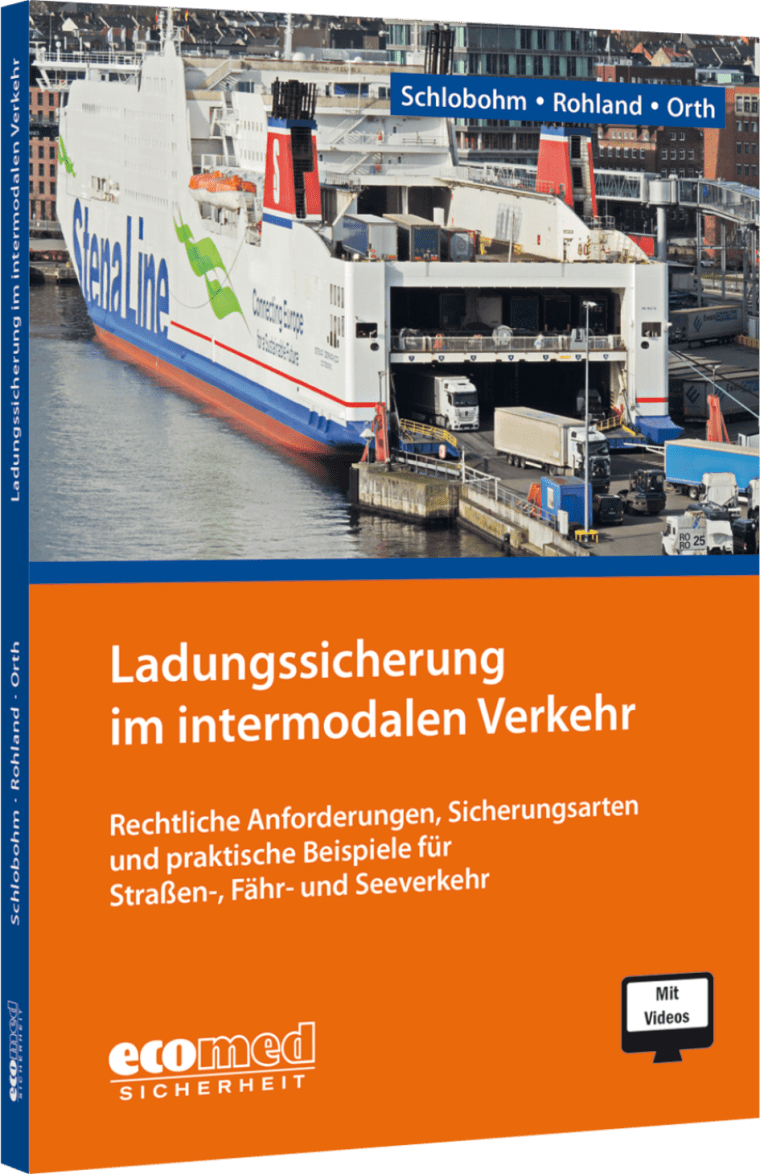
What you need to consider when securing loads for the intermodal transport of goods! In the course of globalisation, long transport routes and the transport of load units in a chain of different modes of transport have become an integral part of world trade. In order to get the load safely to its destination at all times, it must be optimally secured for both road and sea transport. This combined load securing for so-called ‘intermodal transport’ has a number of special features, which are described in detail in this book: Depending on the mode of transport, the different G-forces must be taken into account, the necessary load securing calculated and the correct lashing equipment used. From the contents: Legal responsibilities, duties and liability Extracts from the relevant regulations and definitions in road and sea transport form the basis of these responsibilities Physical principles: Differences in forces in road and sea transport, tipping safety Requirements for the transport vehicle and the container: vehicle superstructures, load capacities, lashing points and load distribution Requirements for tight fit and tight fit in maritime transport Legal provisions in accordance with the CTU CodeSelection of lashing and auxiliary equipment for load securing: lashing straps, edge protectors, lashing chains, lashing wire ropes and lashing wire rope straps, round slings and head straps as well as nets and tarpaulinsTypes of load securing using lashing materials and determination/calculation of the required securing forces:Tie-down lashing method also according to CTU code, diagonal lashing method, diagonal lashing, horizontal lashing, load securing in combination, head and bay lashing, direct lashing according to CTU code Checklists: Load securing in road transport, Packing of goods transport units, Acceptance/inspection of containers according to CSC The chapters are concluded with ‘For your memory’ summaries. This ensures that you can memorise and repeat the most important points.The checklists at the end of the book help you to quickly recall the knowledge and put it into practice.
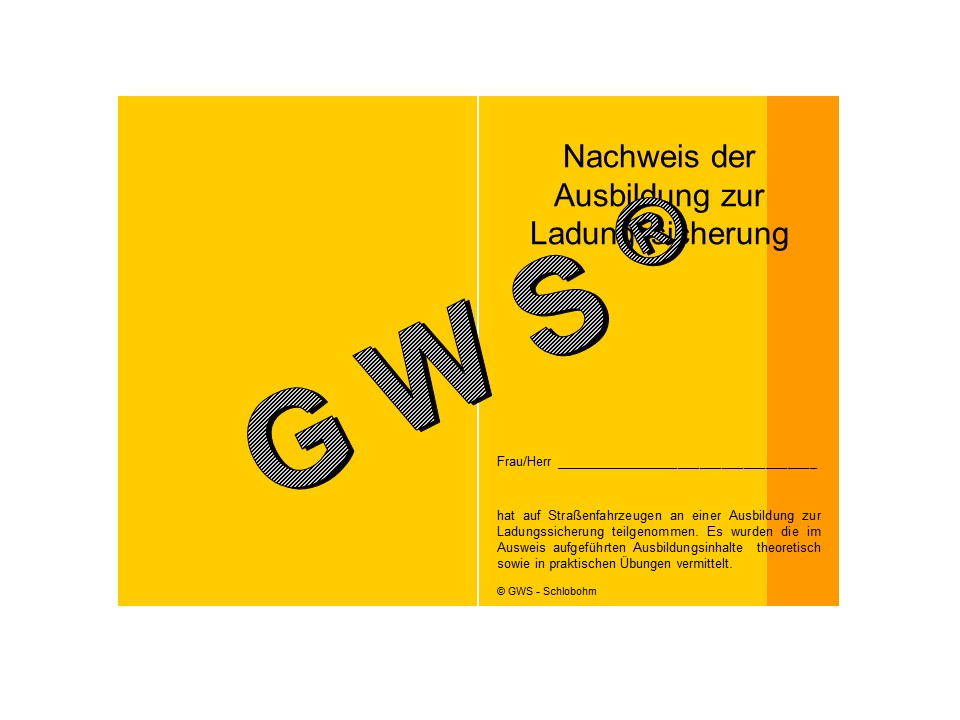
"Proof of training in load securing"For documenting participation in training courses in the field of load securing on road vehicles.With side for photograph and signatureGeneral and special training contentFor initial training and advanced trainingThe general and special training content specified in the ID according to VDI 2700a. In order to meet the state of the art and the legal basis, a 3-yearly recurring training course according to VDI 2700, sheet 5 "Load securing on road vehicles - quality management systems" must be carried out.Evidence of the 3-yearly recurring training can be recorded in the training record.Training organizers are thus constantly in contact with their customers.Quantity prices on requestCurrently only available in German! Feel free to contact us if you need another language.
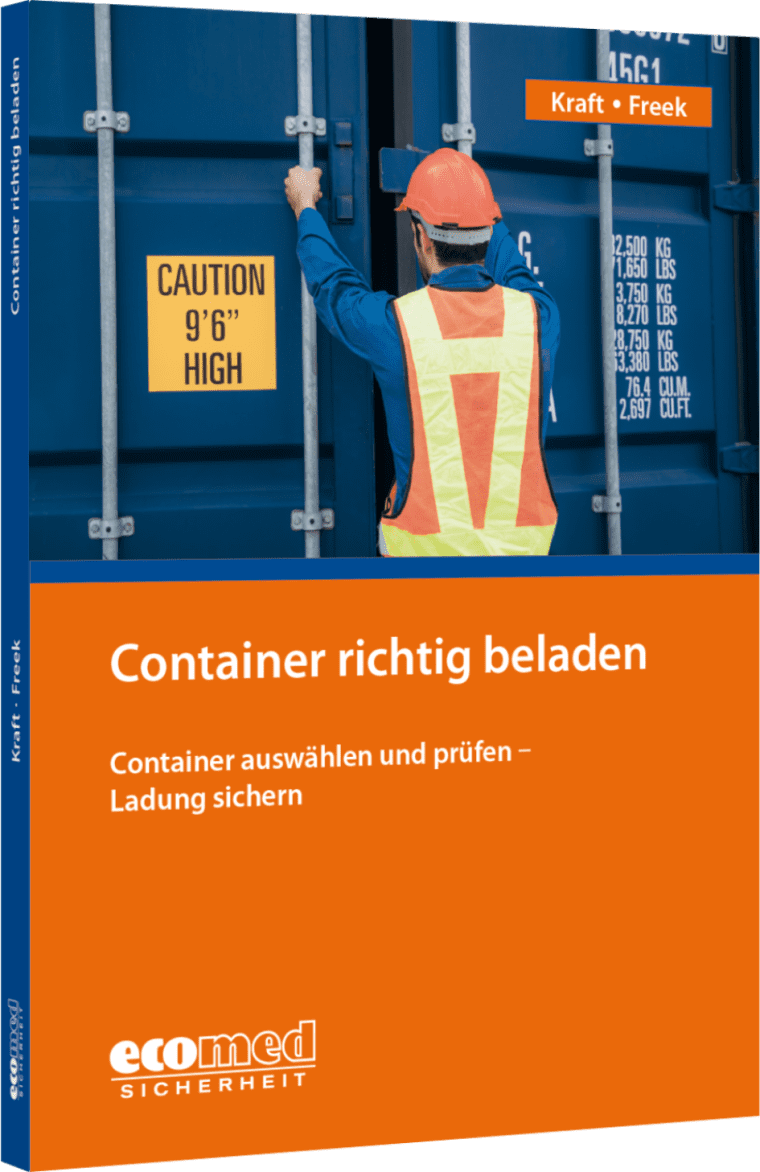
Joachim Freek, Uwe Kraft, Gerhard Süselbeck, 8th edition 2022, 214 pages How to load your freight containers correctly! The globalisation of the world economy has inevitably led to an increase in the transport of goods to and from all continents in recent decades. However, the volume of container traffic is also an indicator of the state of the global economy. Especially for general cargo of all kinds, the freight container is the means of choice for fast, safe and efficient handling. This edition has been completely revised by the authors. Times have changed and so has the handling of the ‘freight container’ as a means of transport. The principle of the globally standardised container and an equally globally adapted infrastructure has remained the same. Everything else (regulations, methods of load securing) is subject to constant change. The revision takes this into account. For example, the contents of the Code of Practice for Packing CTUs, containers with reduced stacking mass and confirmed gross mass have been newly taken into account. From the contents: - Fundamentals of the container - Regulations - Physical principles of load securing - Load securing equipment and its use - Loading the container - Documentation - Fumigation of the container - Security - Control questions Quantity prices on request

Training course for operating telescopic forklifts level 1/2a/2b according to DGUV 308-009Haupt / Trautmann, 2nd edition 2022,80 pagesHow to optimally train prospective telescopic forklift truck drivers! Every company that operates mobile work equipment must have drivers who can handle this equipment safely, economically and appropriately. This applies in particular to all-terrain forklift trucks with variable reach (telescopic forklift trucks). Telescopic forklifts are used in a wide variety of ways in conjunction with various work equipment. For example, telescopic forklifts are often equipped with loading shovels or load hooks in addition to forks. If a work platform is attached in place of the forks, the device becomes an aerial work platform. (from: DGUV 308-009, DIN EN 1459-3) Not everyone is allowed or able to drive mobile work equipment, especially not a telescopic handler - even if they have held a vehicle driving licence for a long time. They would be putting themselves and others in danger!The content of this training booklet covers the requirements of the general qualification (level 1) as well as the additional qualification for rotating superstructures and crane operation (level 2a) and use as an aerial work platform (level 2b) in accordance with DGUV principle 308-009. The operational or construction site-related instruction (level 3) can naturally only be carried out in the company or on the construction site and is not part of this document.DGUV Principle 308-009 is intended to enable suitable persons to be selected on the basis of the specified standards and to enable them to operate telescopic handlers by means of appropriate training. This training booklet provides optimum support for training.

Training course for operating telescopic forklifts level 1/2a/2b according to DGUV 308-009 Haupt / Trautmann, 2nd edition 2022, 80 pages This presentation provides optimum support for training telescopic handler drivers! Every company that operates mobile work equipment must have drivers who can handle this equipment safely, economically and appropriately. This applies in particular to all-terrain forklift trucks with variable reach (telescopic forklift trucks). Telescopic forklifts are used in a wide variety of ways in conjunction with various work equipment. For example, telescopic forklifts are often equipped with loading shovels or load hooks in addition to forks. If a work platform is attached in place of the forks, the device becomes an aerial work platform. (from: DGUV 308-009, DIN EN 1459-3) Not everyone is allowed or able to drive mobile work equipment, especially not a telehandler - even if they have held a vehicle driving licence for a long time. They would be putting themselves and others in danger!The content of this presentation covers the requirements of the general qualification (level 1) as well as the additional qualification for rotating superstructures and crane operation (level 2a) and use as an aerial work platform (level 2b) in accordance with DGUV principle 308-009. The operational or construction site-related instruction (level 3) can naturally only be carried out in the company or on the construction site and is not part of this document. DGUV Principle 308-009 is intended to enable suitable persons to be selected on the basis of the specified standards and to enable them to operate telescopic handlers through appropriate training. The presentation includes: - Download Presentation: - In the download you will find a presentation with approx. 150 slides, which guarantees you an interesting lesson organisation. Tool for creating operator cards: The download includes an editable PDF file as a print template. The photo of the new ‘operator ID card’ holder can be digitally inserted directly! - Special, particularly high-quality document paper for printing the ‘operator ID cards’ can be found here Link here (sufficient for 50 pieces). Reading sample Foreword
